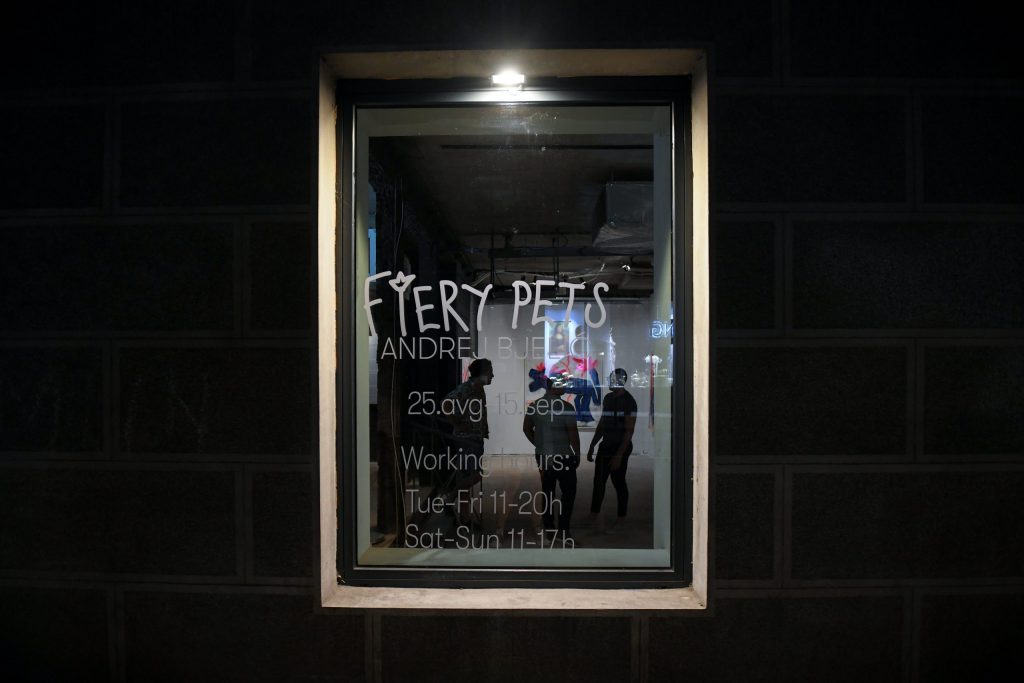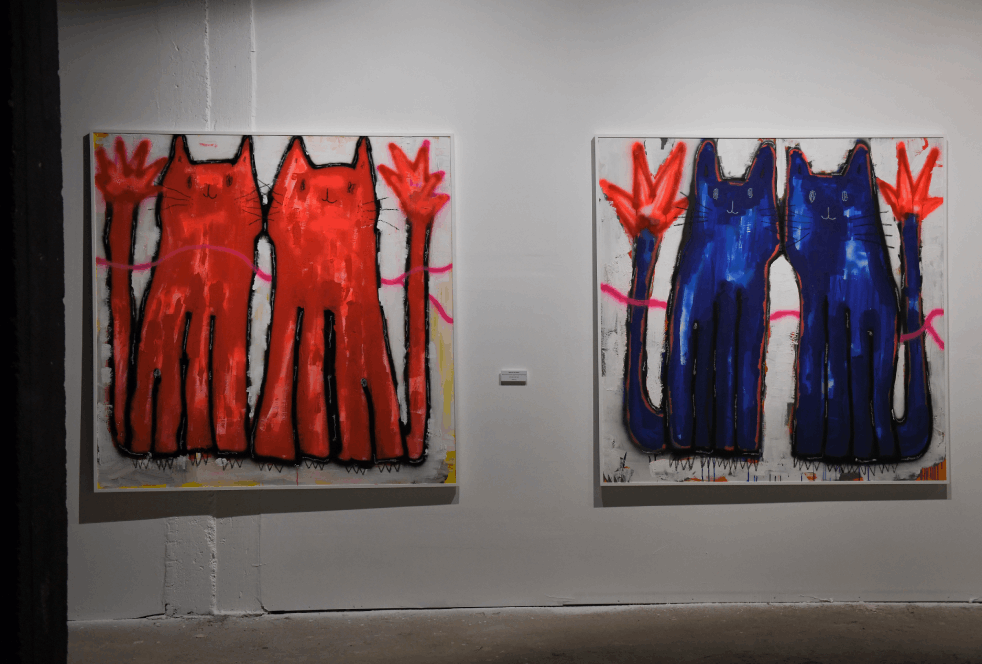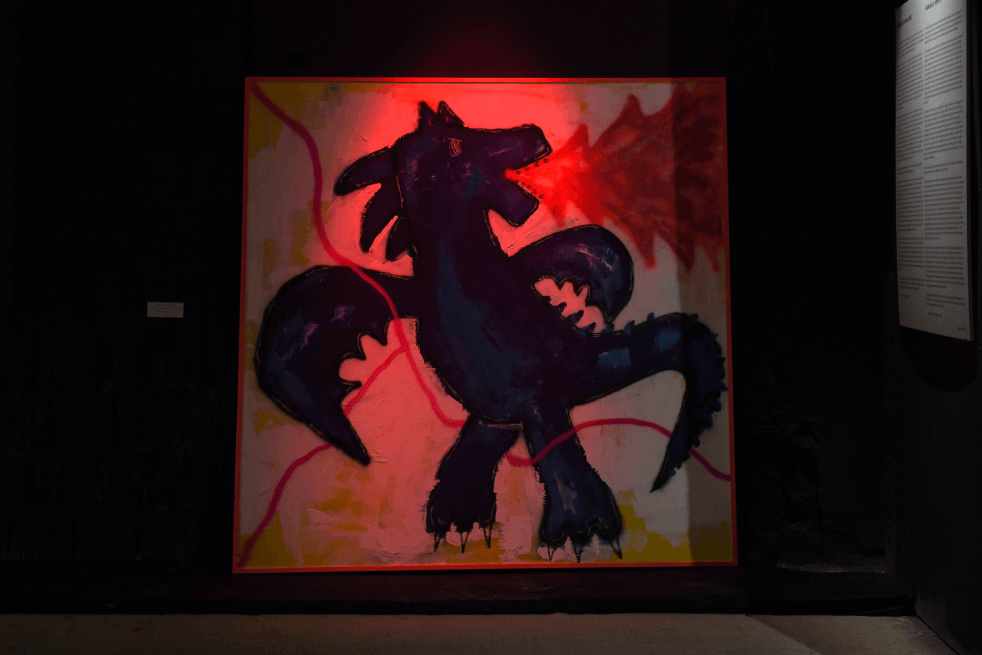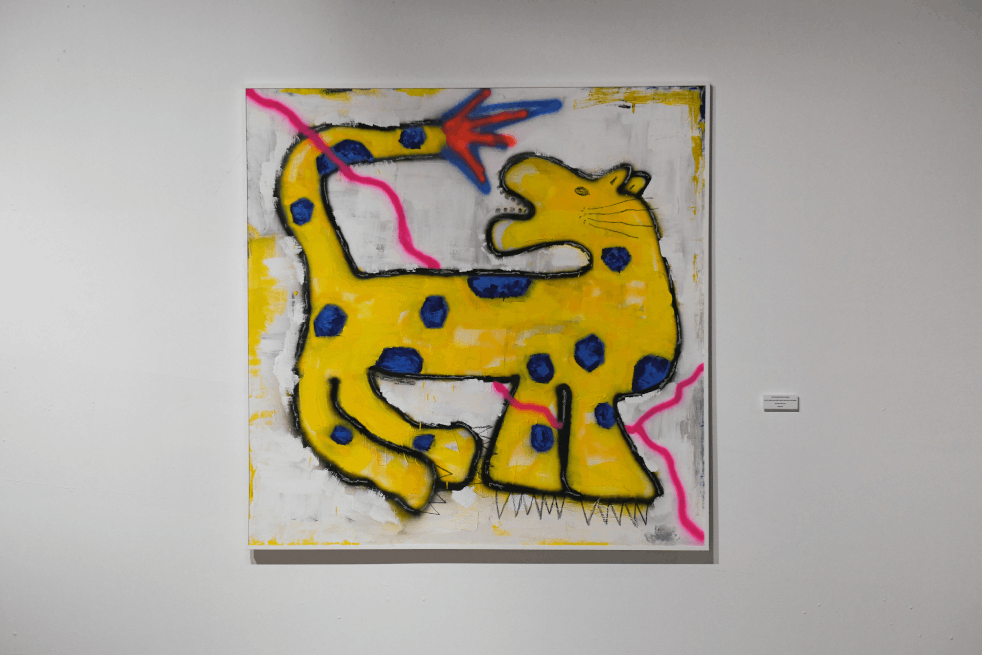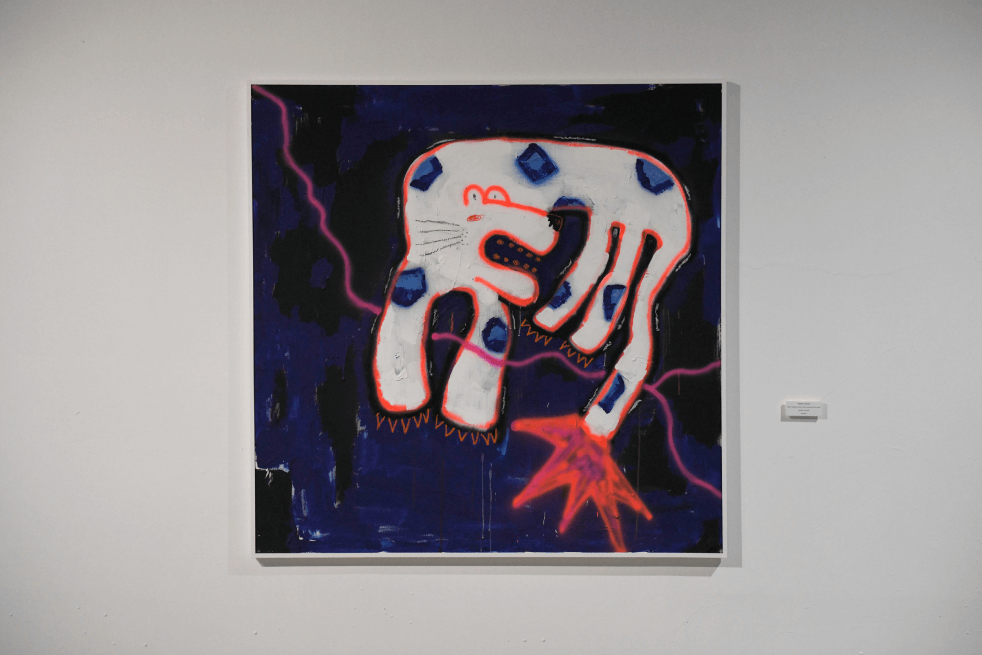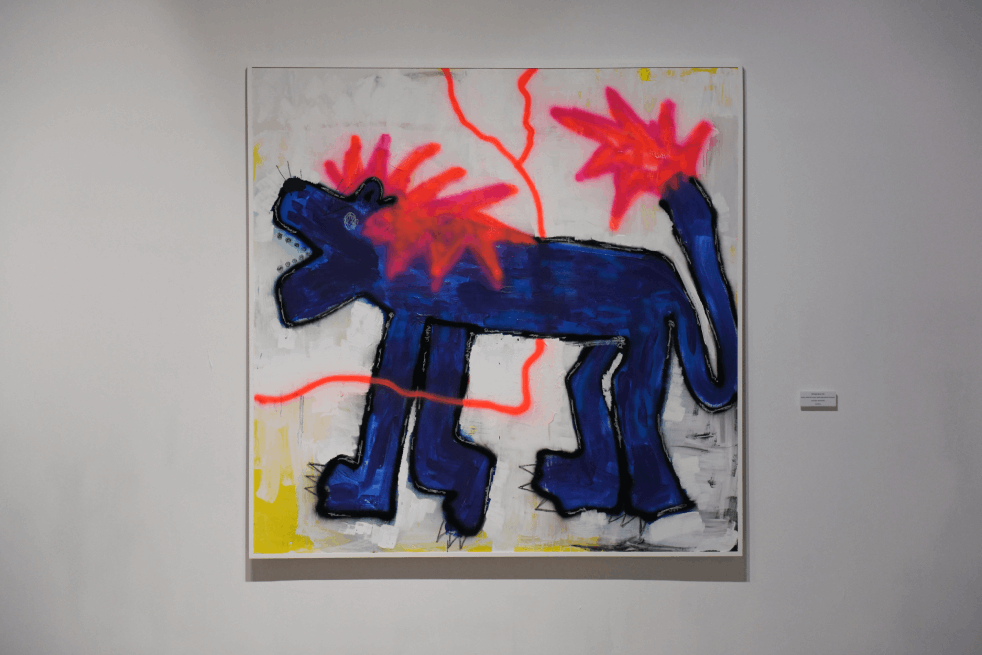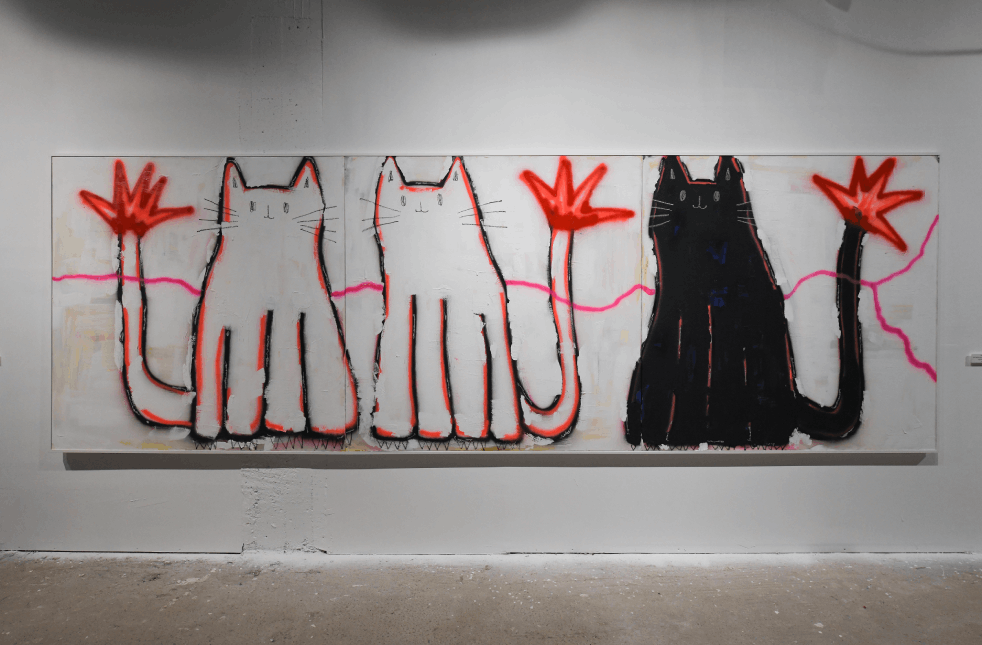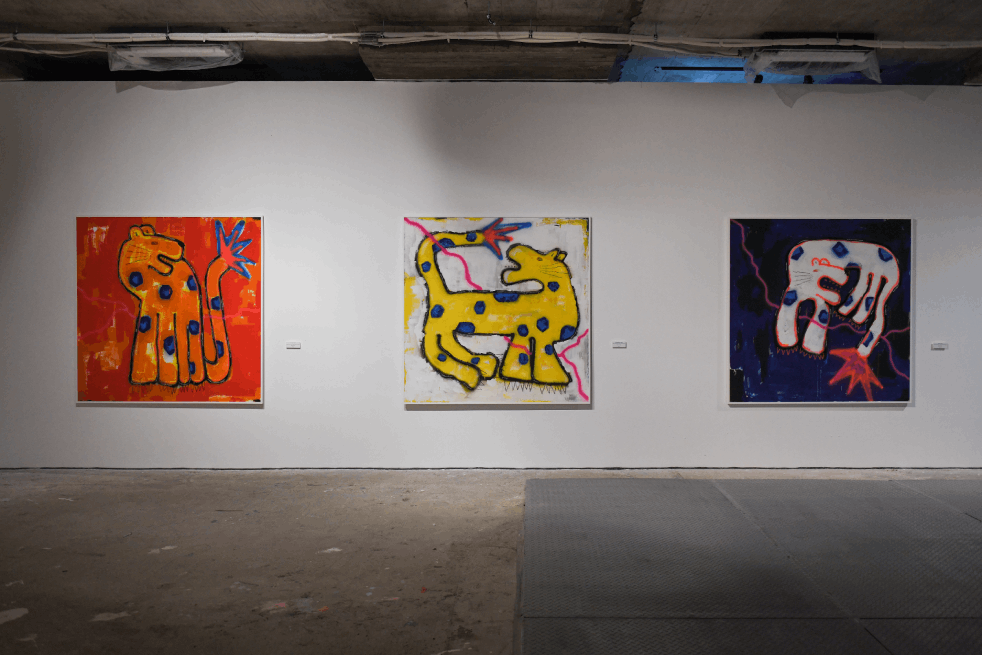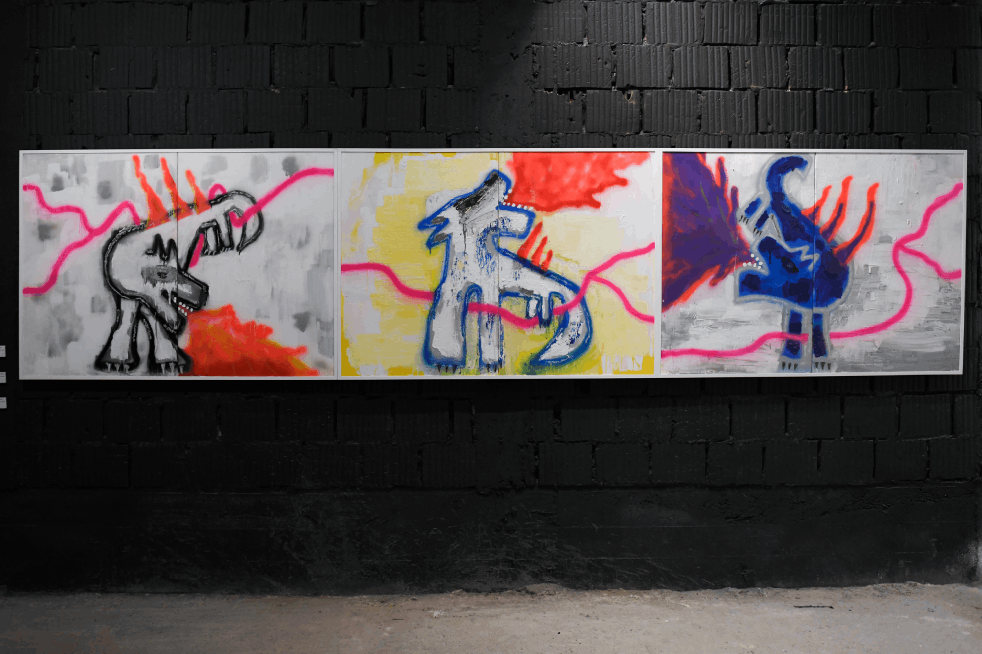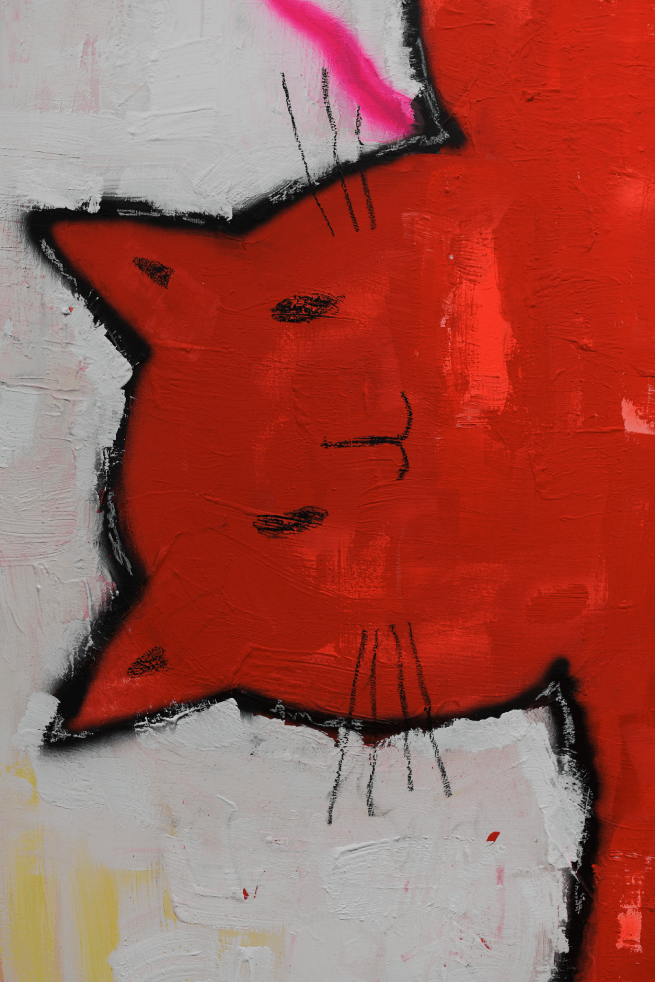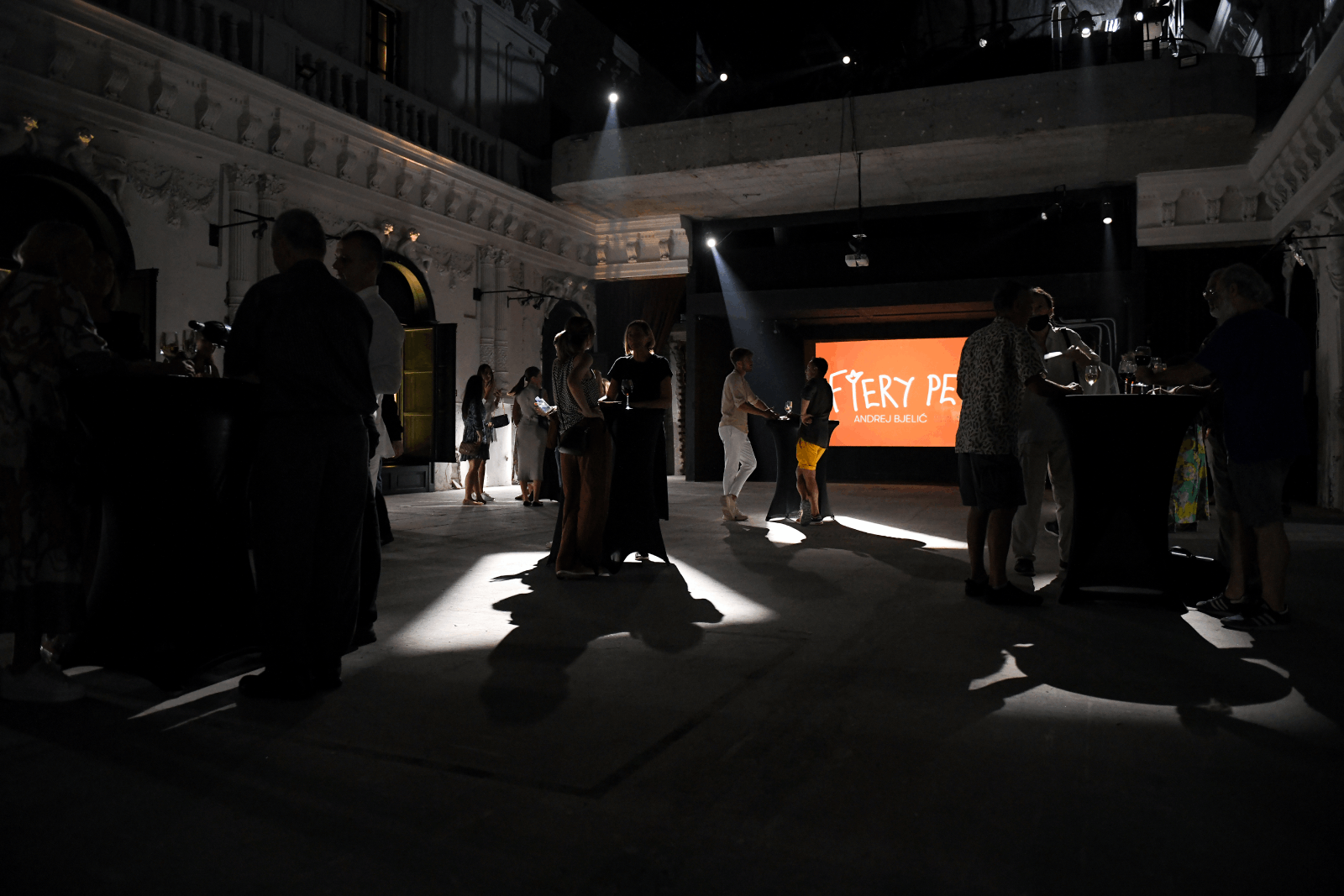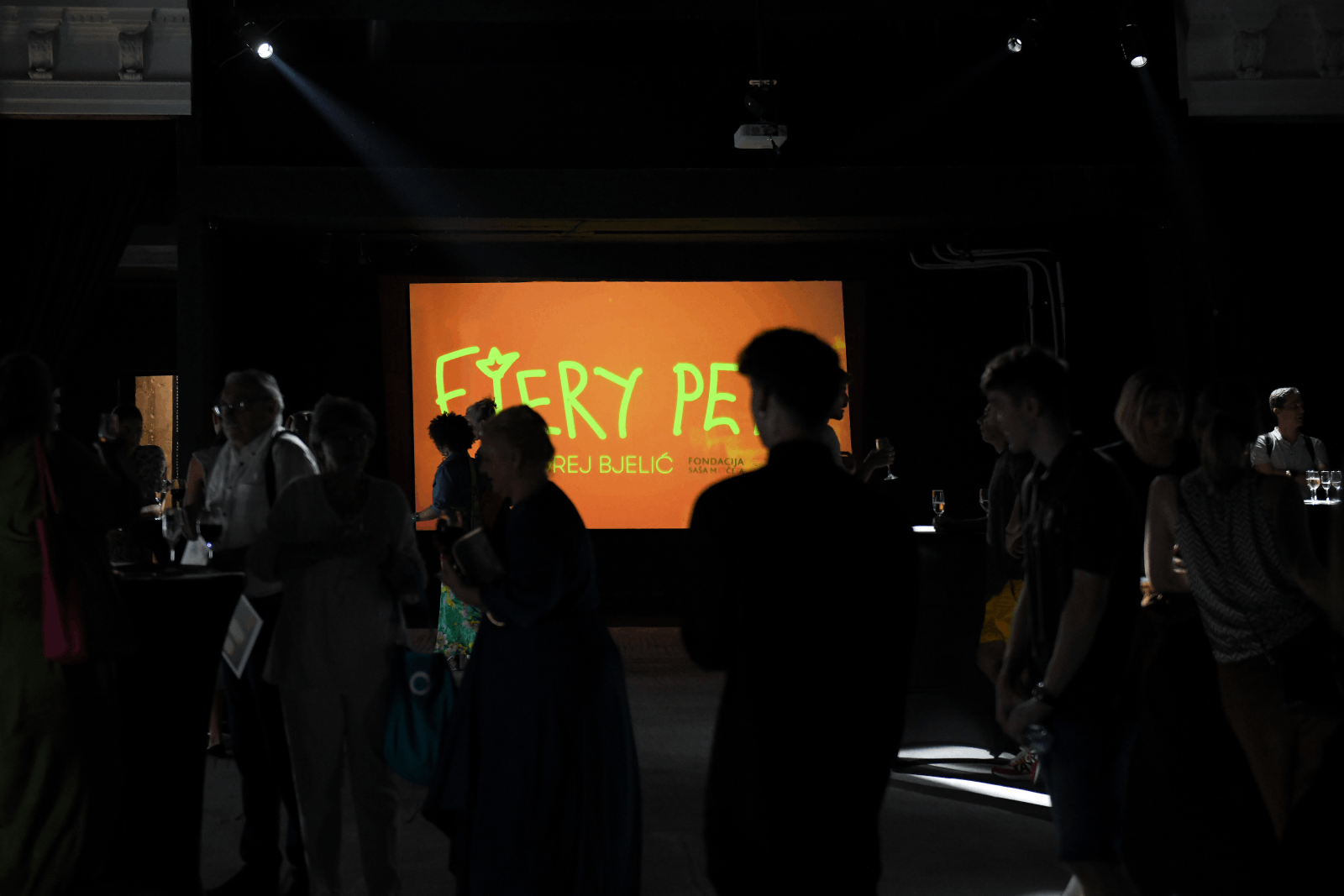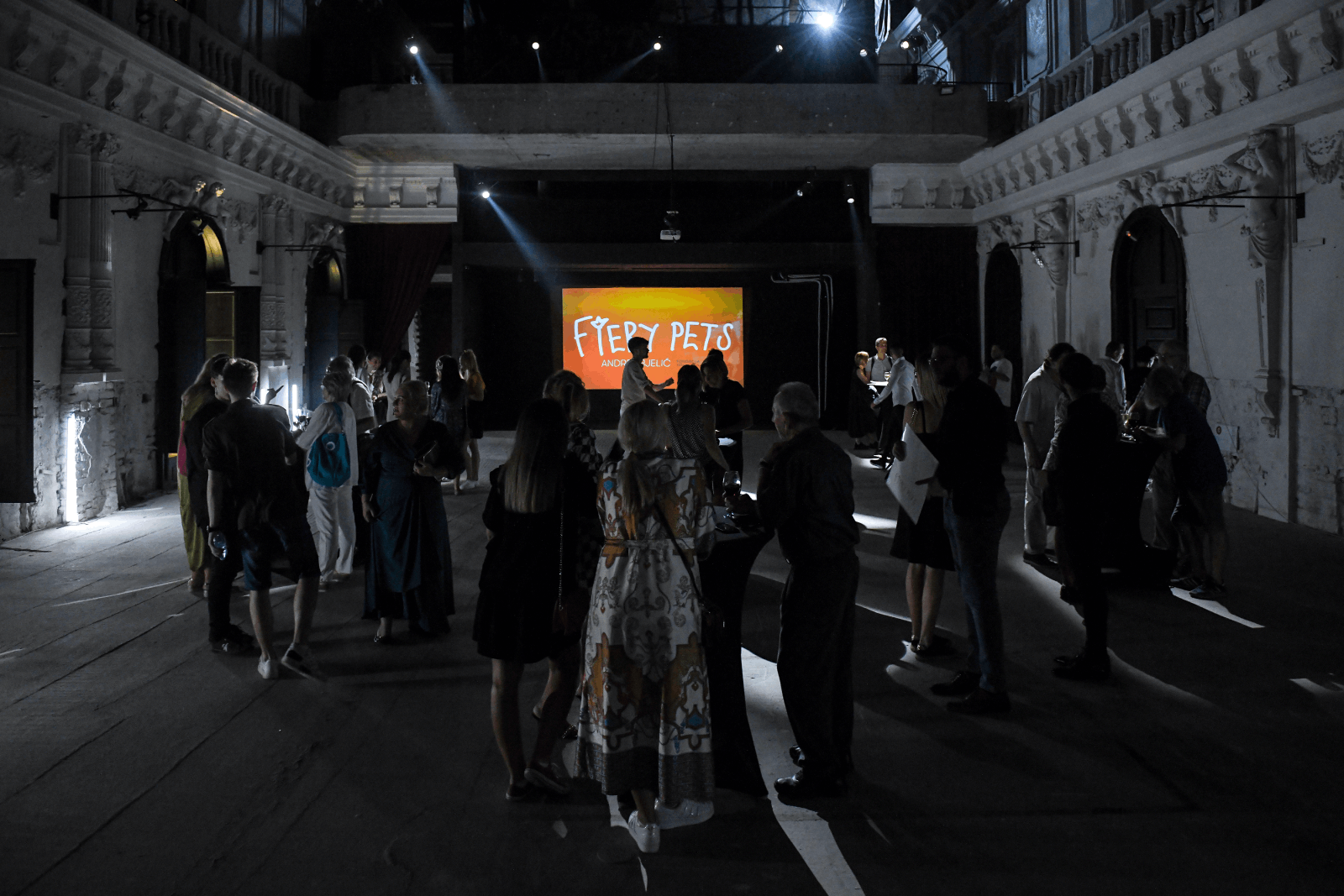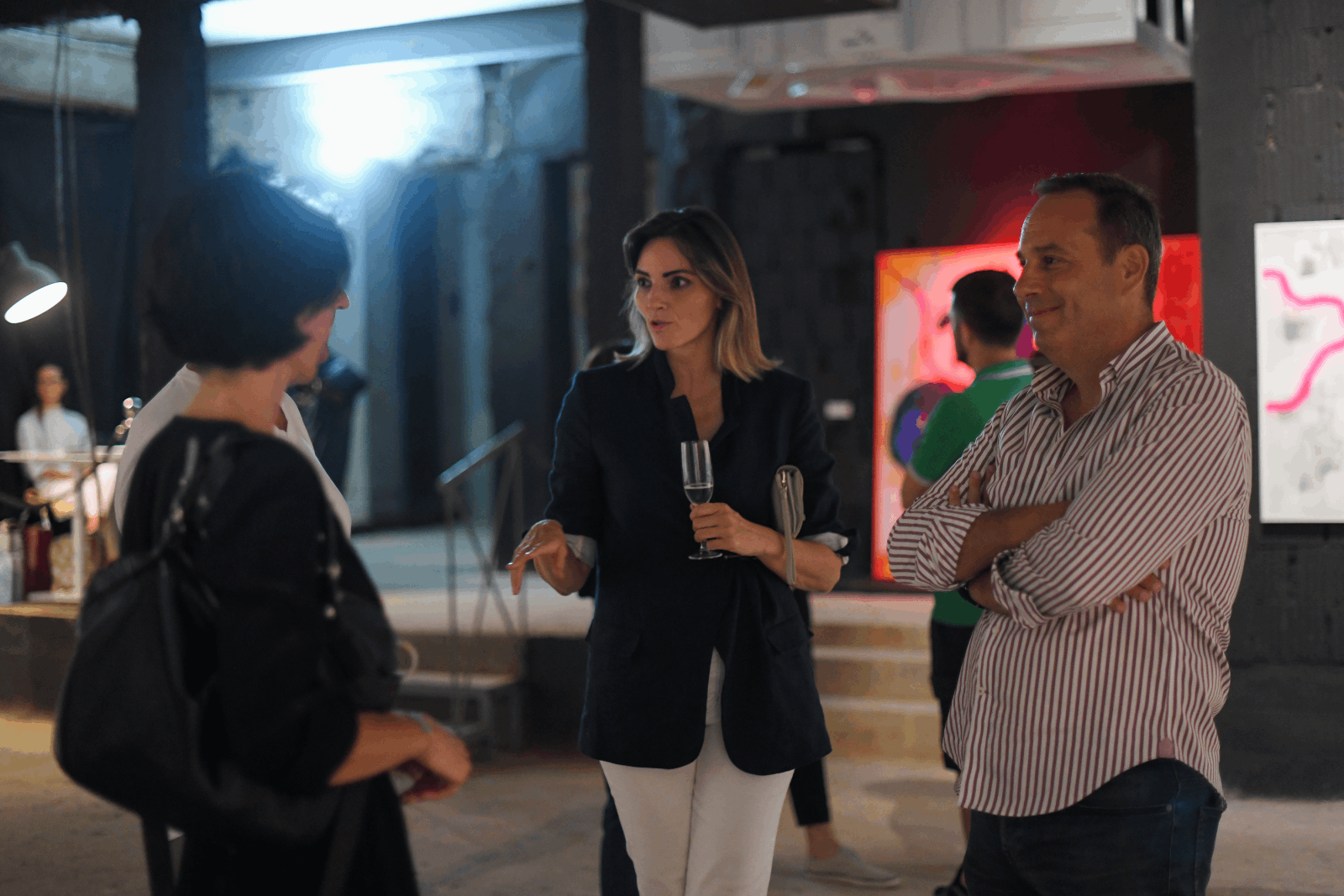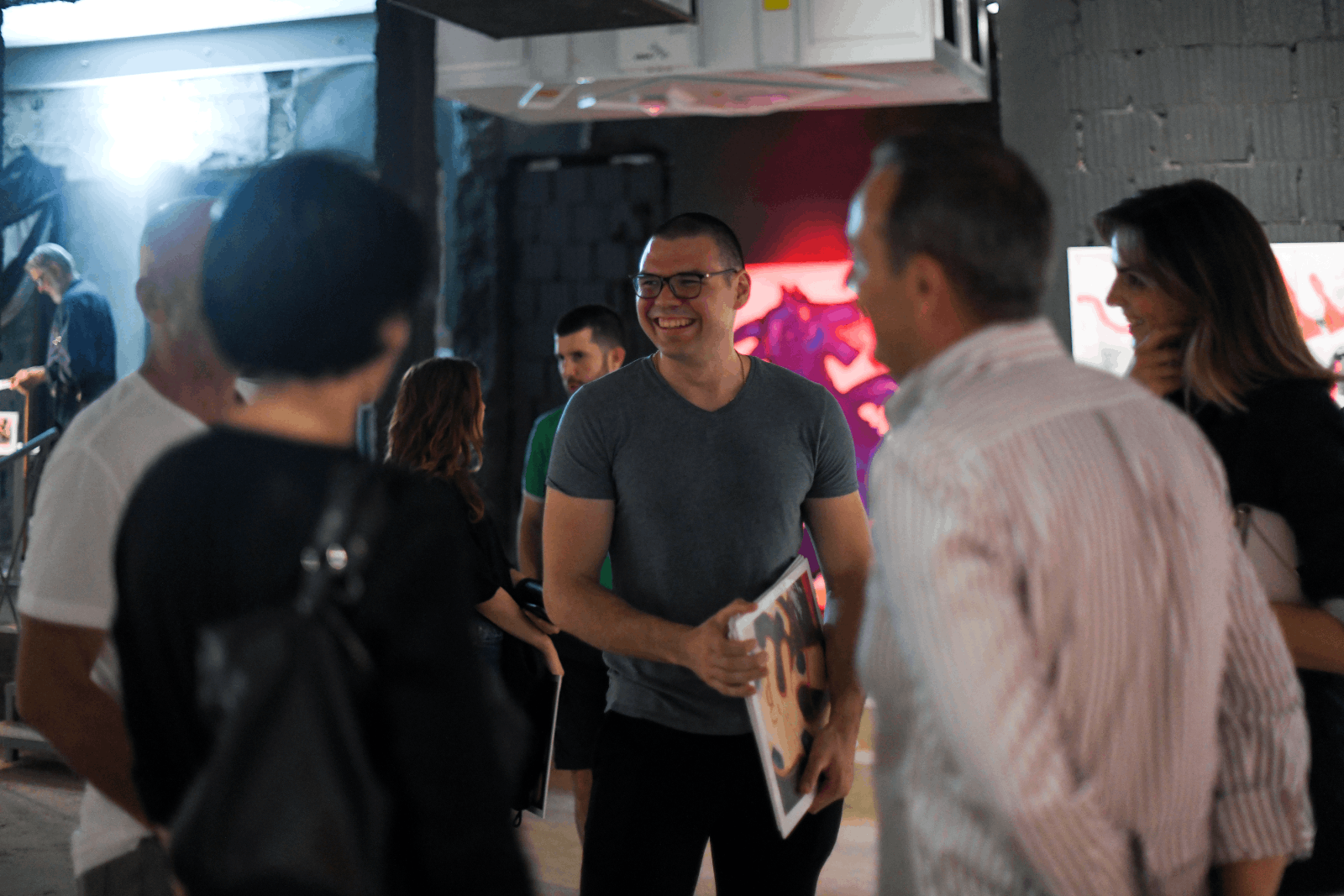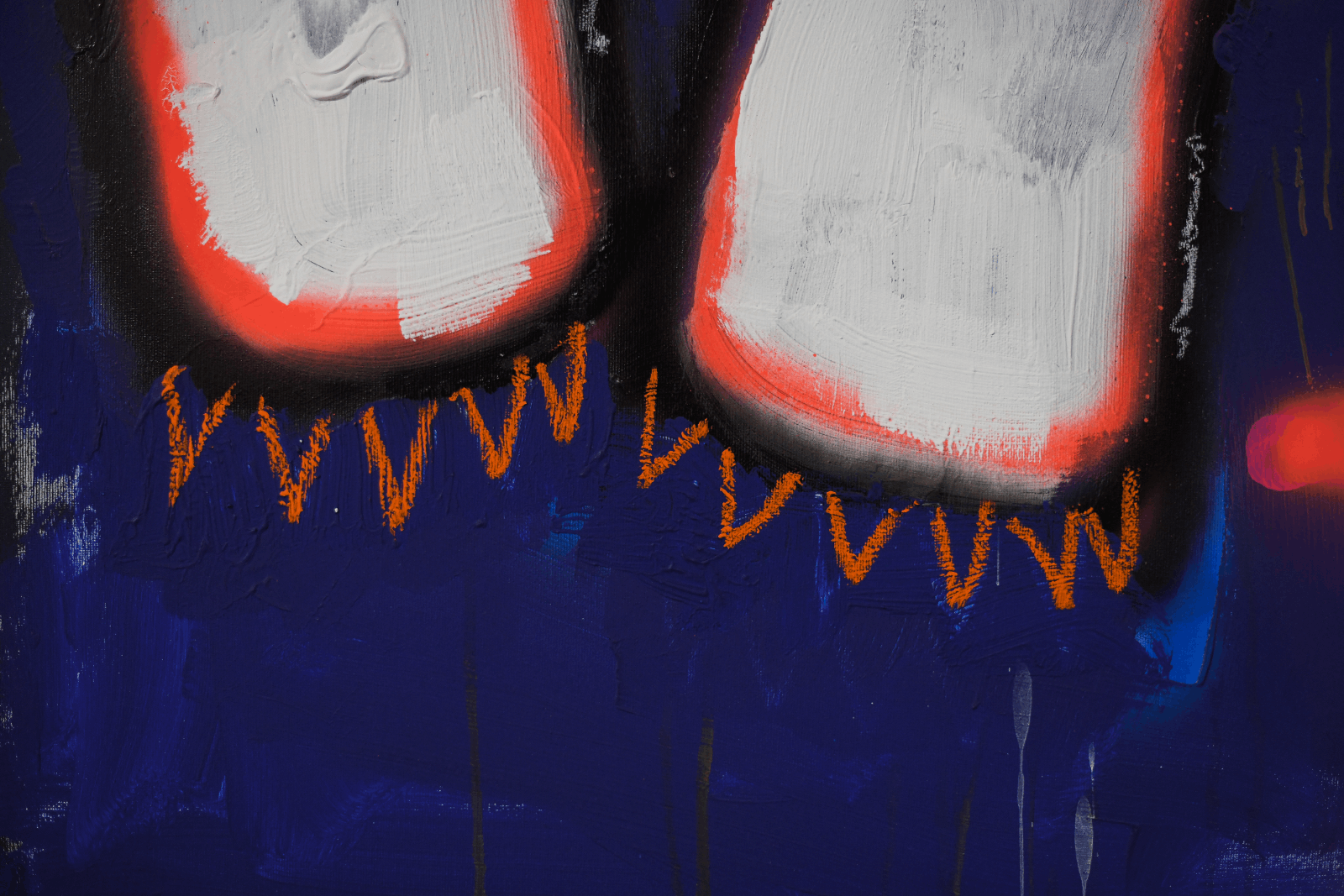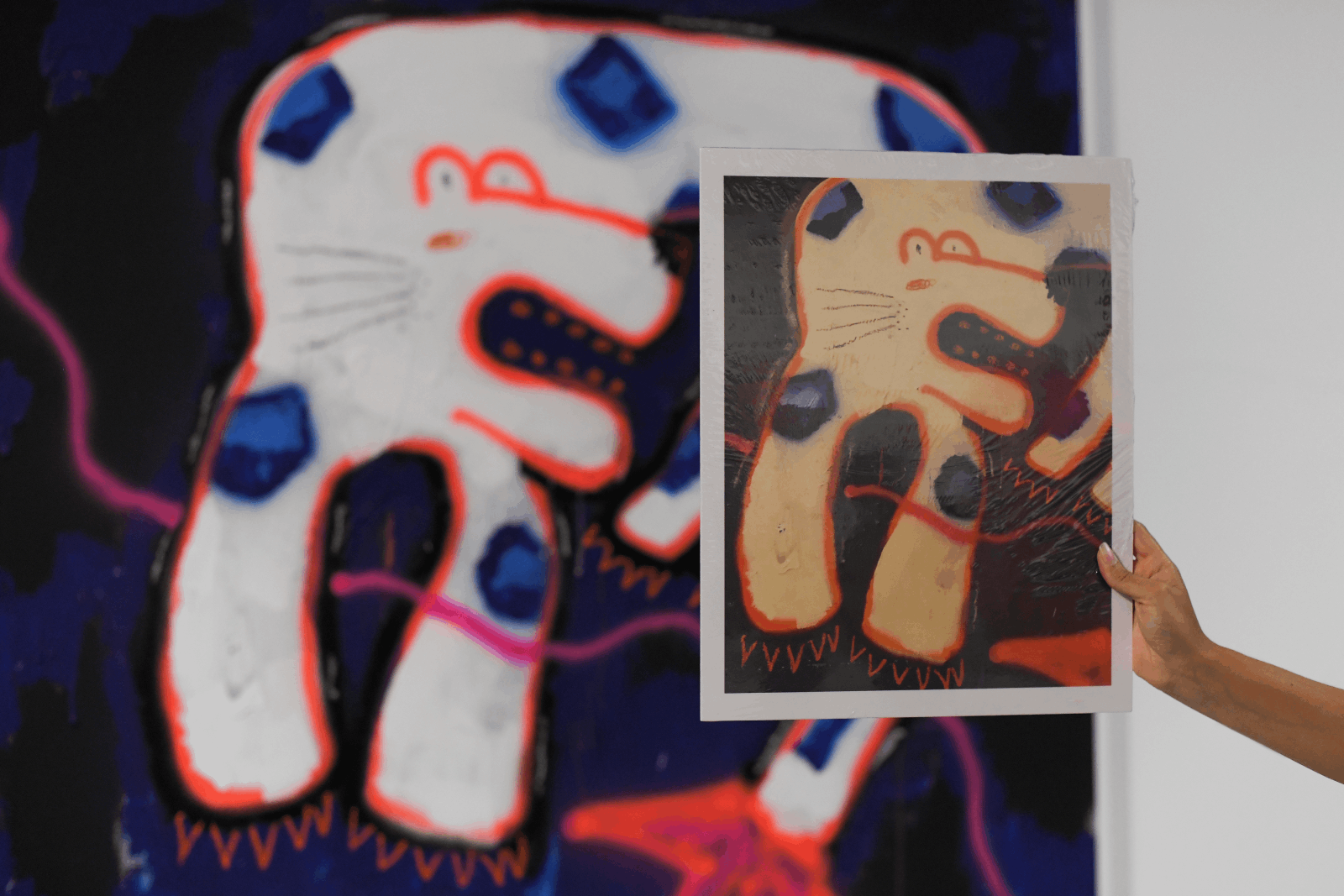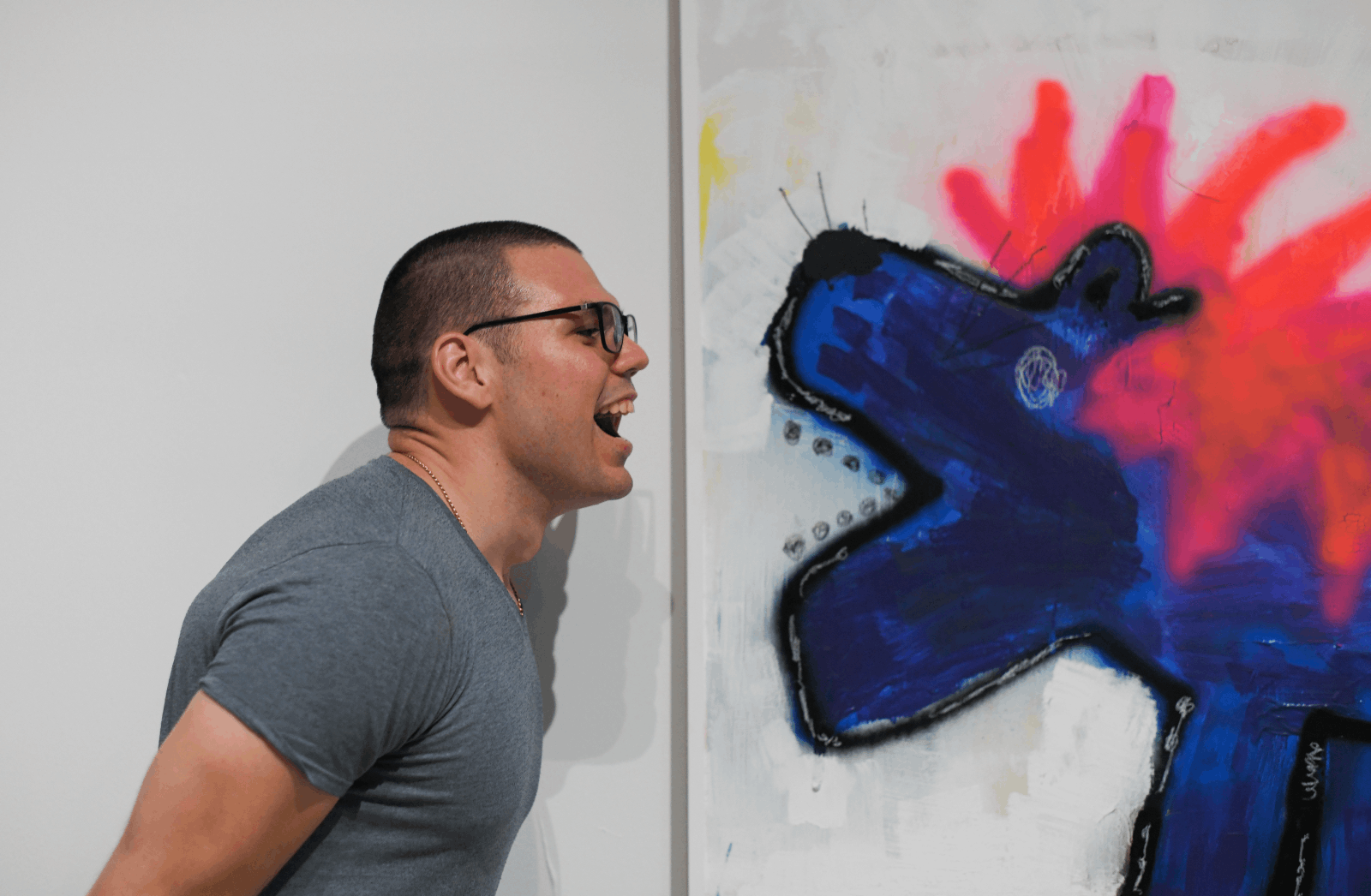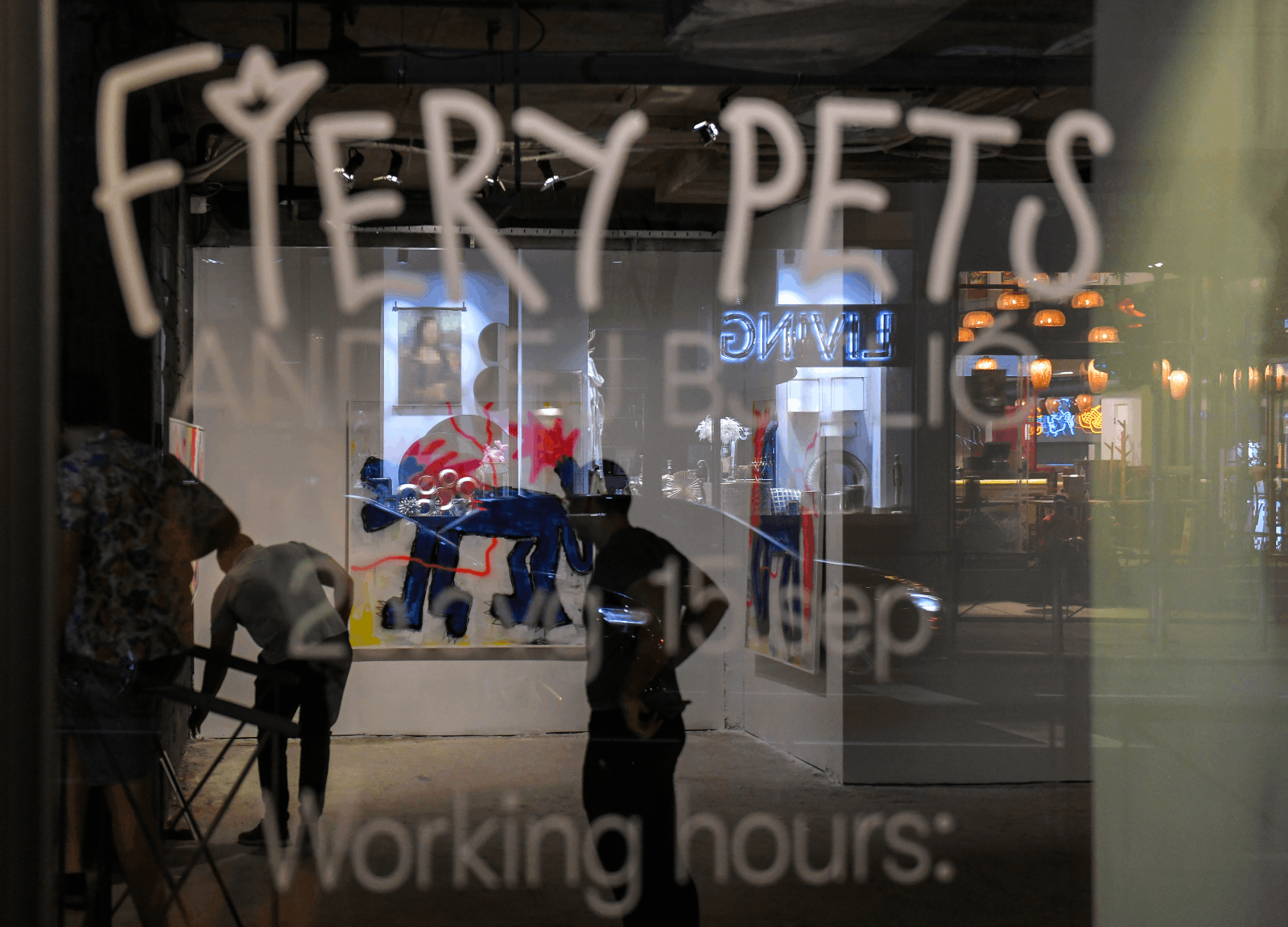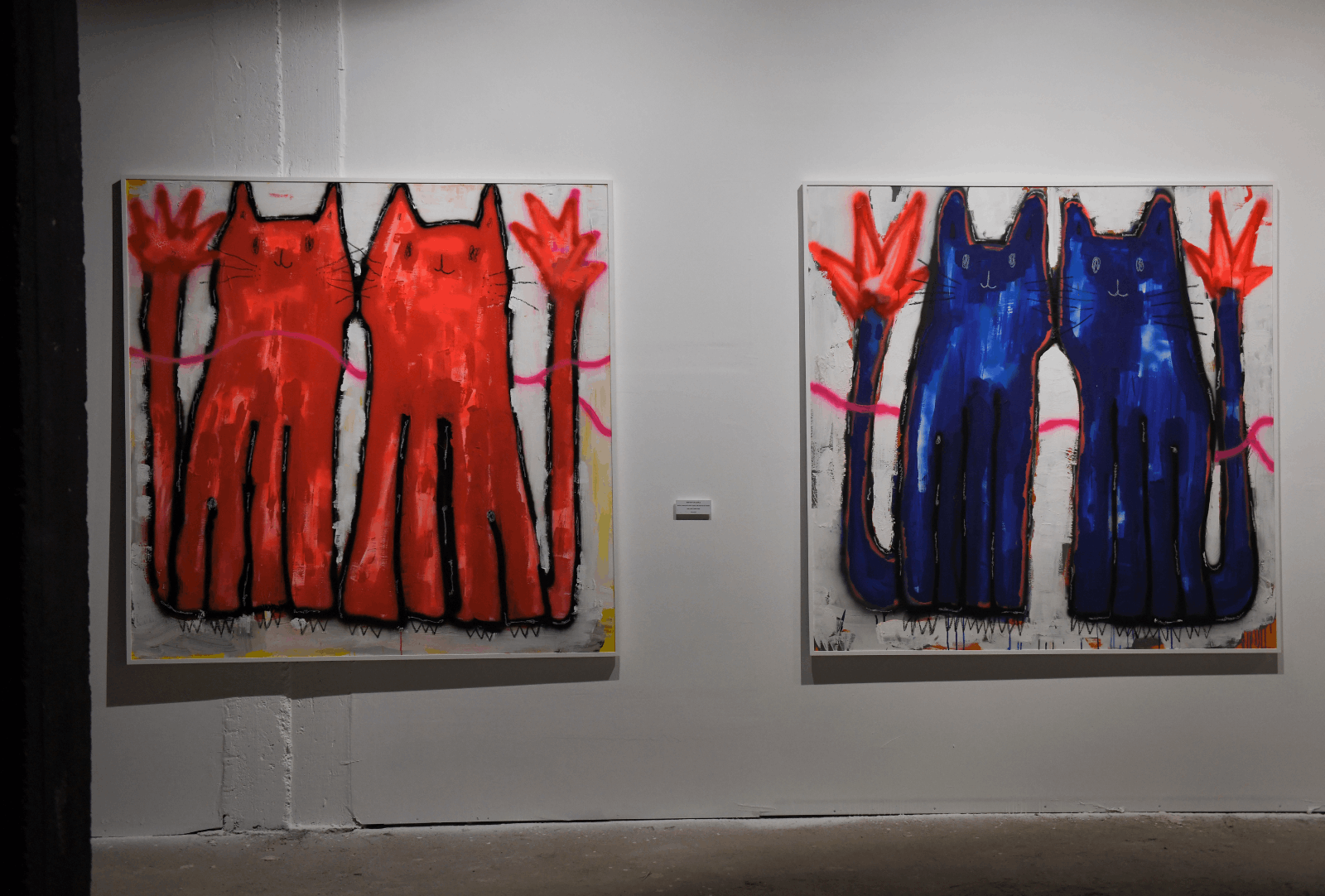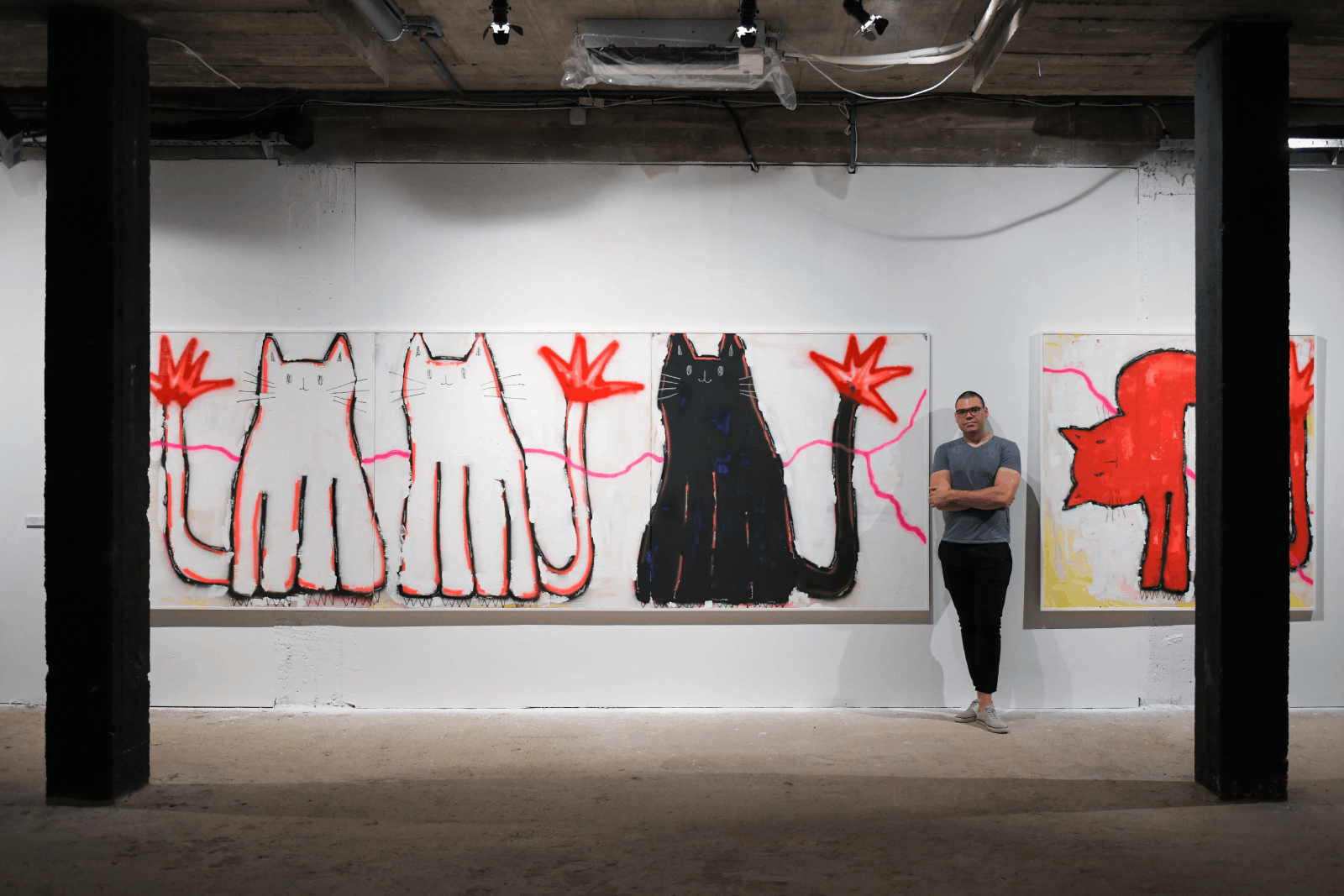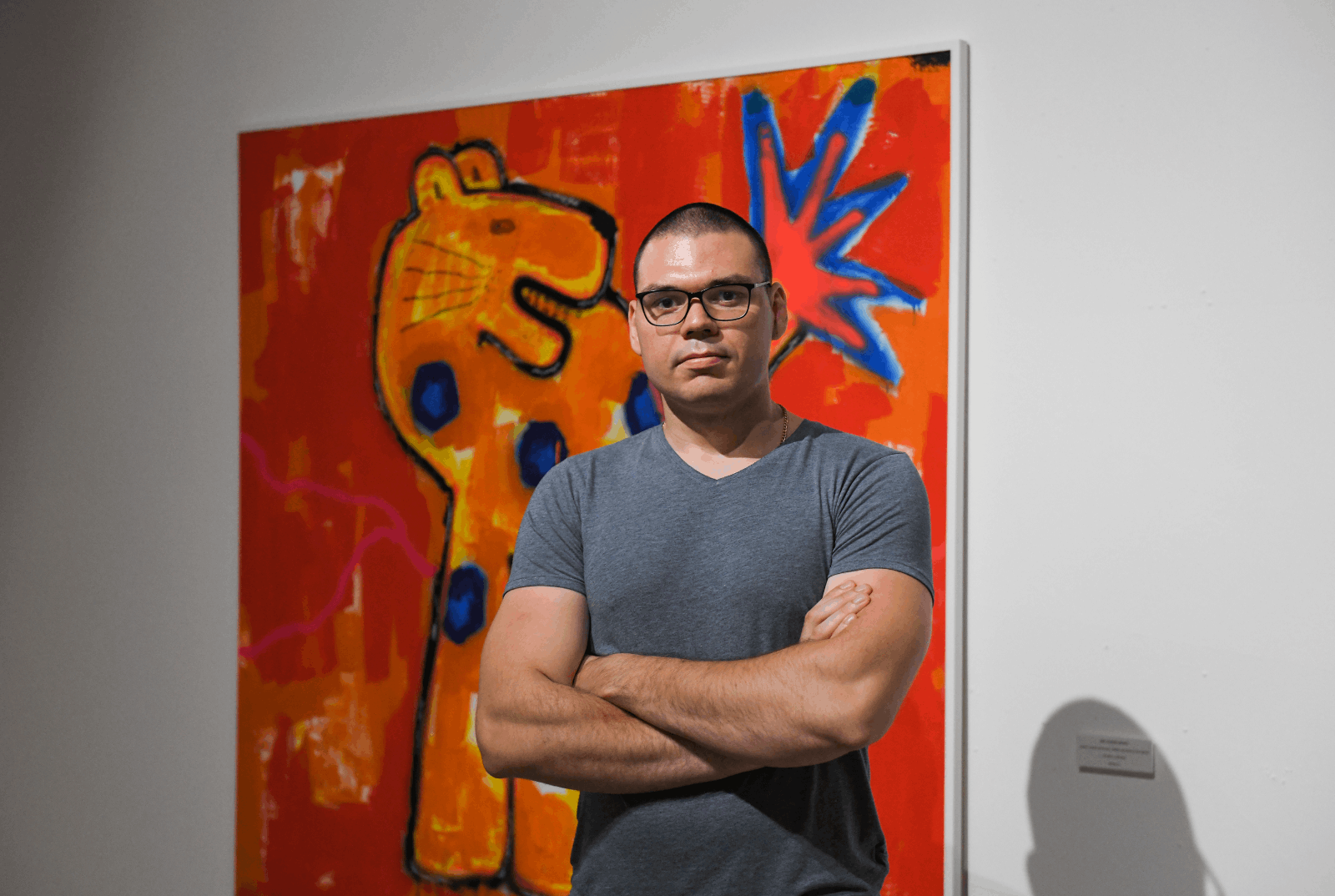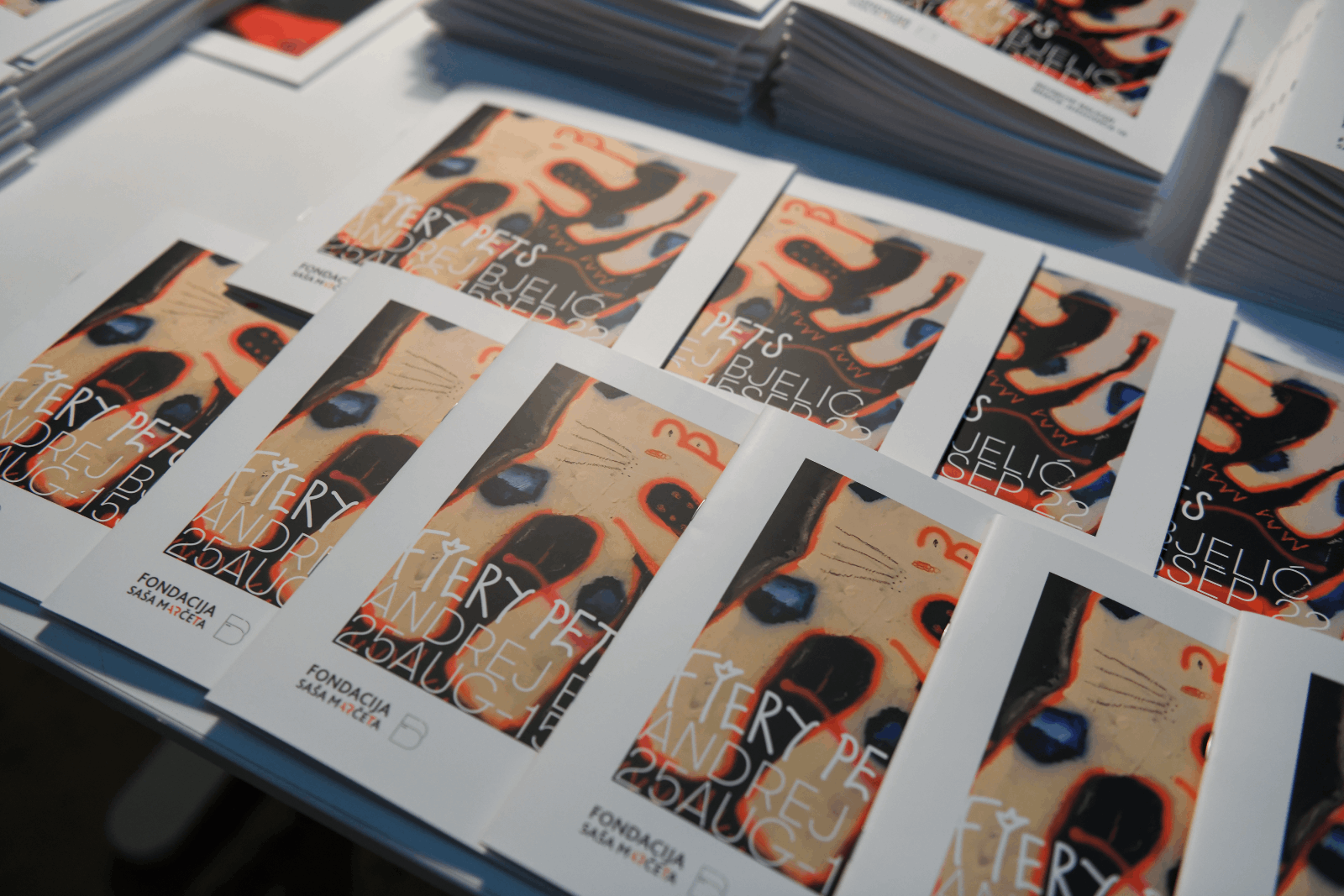August 25 – September 15, 2022.
ANDREJ BJELIĆ: FIERY PETS
When Henri Rousseau’s wild animals, often referred to as the customs officer (le Douanier), moved into the 21st century and decided to reawaken in a new form, possibly as street art, it’s likely they wandered into New Belgrade. There, on a small terrace-studio, enveloped in a cloud of automotive lacquer, Andrej Bjelić has been creating his world of contemporary urban desert and jungle for several years.
Unlike his previous cycles, where he handled all elements of the painting in the same plane, much like street graffiti, with thin layers of color, in his new cycle Andrej begins to paint more deeply, separating the background, figures, and foreground (the animals’ paws are either in front or behind). The background of most paintings is a whitish structure, like a nebula, through which traces of golden light and a neon “horizon line” occasionally shimmer, evoking a lightning strike. This is the symbolic spatium universalis—a universal space where charismatic, fantastical animal figures, the heroes of Andrej’s story, emerge. It’s important to note that the painter is surrounded by dozens of pets in real life, with whom he has a special and caring relationship. Hence, the exhibition title is not animals or beasts but pets—domesticated animals, in a sense tamed and close to humans, even when they come from the wild or mythical world. They are rendered with a sense of sympathy and empathy, making them endearing and desirable figures.
The second part of the exhibition’s title, flaming, refers to the fiery nature of the art itself, blazing in accents of red-orange, scarlet neon, blush pink, purple, and sharp shades of ultramarine blue light. There are also painted flames bursting from the animals’ mouths or their fiery tails, which seem to salute us in a calm, greeting posture. Andrej’s fiery animals are bearers of flame, ready to take off like rockets. Although some figures originate from depictions seen in European heraldry (dragon, unicorn), they are far removed from the tradition of Western European animalistic art, drawing instead on the aesthetic codes and pulse of African and non-European civilizations—art from the Other. One could argue that this animalistic concept is closer to the perception of animals as emblems, deities, independent entities, and spirits (from totemic representations onward), symbols of strength, courage, protection, invincibility, and heroism, rather than viewing animals as part of the anthropocentric world.
The main subject, the animal figure, is hypertrophied (160 x 160 cm). It is painted in one breath (with a spray, brush, or pastel stroke), and the sheer size immediately leaves a powerful impression. Along with the vigorous strokes, the “bite” of color—the raw neon tones that instantly excite and “hit” the senses—gives the painting an energetic charge, a kind of positive knockout. Positive because the works are brimming with concentrated emotions of vitality, joy, warmth, with a simplicity, humor, and charming naivety that somewhat neutralize the predatory role of some of these creatures, making them potential house pets. Remaining true to everyday pets like cats and dogs, which he painted before, Andrej takes a step further by placing them in unexpected contexts and introducing new animals—wild beasts like leopards and lions, and mythical creatures like unicorns and dragons. The titles of his works speak to these contexts: The White Dog Who Thinks He’s a Dragon (and breathes fire), The Light Blue Dog Who Thinks He’s a Dragon (also breathing fire), The Dog Whose Father Was a Dragon (even closer to the dragon world), The Young Dragon in Search of Glory, The Blue Lion Howling, The Proud Unicorn, The Red Limbo Cat with a Questionable Talent, The Rare Leopard with Blue Spots, and others. There is a touching desire, but also a realized potential, for “ordinary” animals to become something much more “significant”—legendary, mythical creatures.
When discussing the semiology and symbolism of the dragon, which in European culture is predominantly associated with the dark and dangerous side of the symbolic world—the dragon as a monster, a beast—we encounter a completely different image in the cultures of the Other, particularly in the East, where the dragon is considered the most powerful symbol of luck. Believing, in a sense, that dragons exist—perhaps on a spiritual or parallel reality level—people in these cultures see them as bringers of power, endurance, prosperity, and success, as “celestial creatures” and symbols of masculine (Yang) energy. Though they reign over clouds and water, dragons are primal beings of fire, embodying a strong driving force. Thus, “awakening your dragon” is considered to mean awakening the energy for your own life.
Andrej Bjelić’s fiery animals seem to carry a part of that mythical strength, pride, resilience, inspiration, and clear focus on a happy outcome for all endeavors. Therefore, with its sincerity, enthusiasm, and brightness, as well as its fearlessness, this artwork cannot leave anyone indifferent.
So, don’t forget to walk your dragon!
– Ana Popović Bodroža
